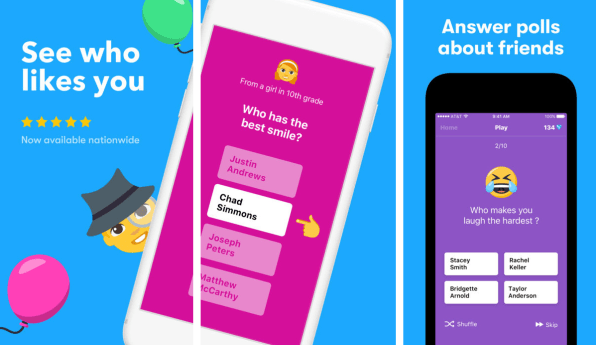Social Media Predictions For 2018: Shopping, AI, And Maybe Even A Soul
 By Ryan Holmes
By Ryan Holmes
For social networks, 2017 may well be remembered as the best of times . . . and the worst of times.
On the one hand, Facebook eclipsed 2 billion monthly users, or nearly one-third of the planet, hitting record highs on Wall Street thanks to an insatiable appetite for its mobile ads. Twitter returned to the spotlight as a political tool, while LinkedIn, on the heels of a $26 billion acquisition by Microsoft, unveiled a host of new features ranging from live video to Snapchat-style lenses.
On the flipside, Snapchat saw its valuation plunge after a promising IPO as competitors copied key features, and Twitter’s struggle to add users continued. And, of course, both Facebook and Twitter found themselves at the center of the fake news firestorm, with Russian-bought ads on the networks under scrutiny from Congress, and a growing chorus of users clamoring for more oversight of their feeds. That Twitter continues to be ground zero for all types of harassment and prejudice certainly doesn’t help its reputation.
So does 2018 herald more tumultuous times for the world’s biggest social networks? Here’s a look into my crystal ball. These are some trends that will define social media in the year ahead for both users and businesses:
Social media Takes On TV (Again)
Remember when the hottest thing on YouTube was Charlie Bit My Finger? These days, the platform formerly known best for DIY videos is literally winning Emmy Awards, while also offering a subscription service that lets you stream live TV from the major networks.
Facebook, too, is upping its TV game, budgeting more than $1 billion in 2018 to produce programming for Watch, the network’s new home for original scripted shows.
Meanwhile, Snapchat is partnering with NBCUniversal to beef up its lineup of original Snapchat Shows, which already includes productions from Conan O’Brien, ESPN, ABC, and Discovery, among other networks.
So will social media dethrone TV in the year ahead? Unlikely. What’s becoming clear is that “mobile TV”—meant to be consumed on the go and on a small screen—is a different medium entirely, with its own set of rules. Content is generally shorter and punchier, with fast cuts, flashy graphics, and more closeups. Social networks that master the art of delivering these premium but bite-sized video chunks in 2018 stand to benefit from voracious video appetites among users and the significantly higher ad rates that video commands. Goodbye funny cat videos; hello Snapchat Shark Week.
Social AI Moves Beyond The Chatbot
2017 started with a flurry of excitement about the promise of AI-powered chatbots to help customers on social media. Then Facebook announced that its bots actually failed 70% of the time. For simple requests like ordering pizza, they worked fine, but anything more demanding proved an exercise in frustration. I have no doubt that bots will get better, but in the meantime, this is a reminder that there’s a lot more to AI than chat.
In 2018, expect to see companies employ AI in increasingly creative ways on social media. Already, ad platforms are capable of testing hundreds of variations at once–tweaking imagery and wording to automatically identify which ads are performing best and put more money behind them. Smart tools can pick out the optimal time to post and even automatically surface clickworthy content to share. The next step: AI tools that bring all this functionality together, while flagging relevant influencers, optimizing imagery, and even coming up with catchy wording for posts.
The end goal is to leave humans more time to do what humans do best–inject creativity, inspiration, and off-the-wall GIFs into social media.
Algorithms Grow A Soul
You’d have to live under a rock not to have noticed the swelling backlash over what ends up in our news feeds and how it gets there. Facebook and Twitter are both wrestling with the repercussions of sharing fake and biased news during the election, and scrambling to find ways to integrate human filters. Then there’s the glut of violent, discouraging, and downright depressing propaganda and news that seems to flood our feeds–enough to leave even the biggest social booster feeling a little deflated.

Beneath these problems is a deeper issue. Right now, most social media algorithms are optimized with one primary metric in mind: engagement. You’re dished up whatever content is deemed most clickable, with little regard to its veracity, news value, or usefulness.
Expect that situation to come to a head in 2018, as networks respond to user pressures and find more nuanced–and, I hope, more ethical–ways to weight and filter the content we receive. Interestingly, Facebook has just acquired the positivity-focused polling app tbh, which may end up injecting some more optimism into our feeds.
Shopping Comes To Social Media (For Real, This Time)
It’s the no-brainer, slam-dunk idea that just refuses to catch on: shopping on social media. Sure, “buy buttons” have been around for years on Facebook, Twitter, Pinterest and Instagram—theoretically letting users make purchases right from inside the networks. But the reality is they generate minimal sales volume and are generally clunky to use–available for just a few products, with limited information about inventory.
Never mind that social commerce is ubiquitous in Southeast Asia on networks like WeChat, accounting for 30% of all digital sales–somehow, Americans can’t be bothered.
Until now. This fall, online commerce giant Shopify officially launched an Instagram integration, letting its merchants sell directly from the network. Considering that Instagram is fast closing in on 1 billion monthly active users and Shopify powers more than 500,000 businesses, we can expect to see an unprecedented range of products bought and sold on social media in 2018.
It’s also worth noting that this arrangement relieves Facebook of having to handle payment processing and merchant support–two bugbears that slowed down past social commerce efforts.
A Sleeping Social Giant Awakens
Quietly, in its own buttoned-down way, LinkedIn eclipsed the 500 million user mark in 2017. And those users are doing a lot more these days than updating their resumes. LinkedIn launched a host of new social features this year, from live video functionality to instant messaging and even Snapchat-style geofilters for use at conferences. Not to mention, 100,000 blog posts are published on the network every week.
As any avid user can attest (and I’m definitely one), LinkedIn generates a level of engagement and genuinely thoughtful interaction that other social platforms are hard pressed to match. It was spared much of the fake news and political furor that consumed Facebook and Twitter in 2017, and has emerged as the preeminent network for sober, thoughtful discussion of all things business.
In 2018, expect to find more companies tapping into LinkedIn’s highly targeted ad functionality and to see sustained user growth on the network. The fact that new owner Microsoft is already integrating LinkedIn’s vast professional data banks into Outlook and Dynamics 365 hints at how pervasive and influential LinkedIn will be in the years ahead.
A Slew Of Unanswered Questions
Behind these trends, social media will also be wrestling with a deeper issue in 2018: the definition of true success.
In little over a decade, networks have captured a global audience of nearly 3 billion users. Only now are they beginning to acknowledge the enormous responsibility and challenges that come with that audience. Can networks continue to scale while safeguarding what shows up in our feeds? Can they keep users happy while finding more and better ways to serve advertisers? Can they find ways to use shopping and free TV to persuade us to spend even more time inside their walled gardens? Time will tell.
(34)



